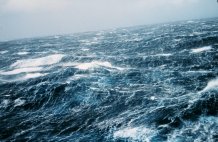Articles

Research sheds new light on understanding Pacific Trade Winds
Research sheds new light on understanding Pacific Trade Winds
Pioneering research has given a fascinating new insight into why the Pacific Trade Winds have seen “unprecedented strengthening” over recent decades.
Named for their ability to help sailors with trade in the 14th century, the ‘Pacific Trade Winds’, had a profound influence on political geography with captains using them to cross the world’s oceans.
However, in the late 1990s scientists observed an unprecedented strengthening of these trade winds during the observational record, which was subsequently related to the early 21st century slowdown in global surface warming, extreme sea level rise in the western tropical Pacific, and a range other substantial impacts.
While their models have been able to shed light on the timing of these recent trade wind changes, they have been unable to reproduce the magnitude.
Now a new international study, featuring Professor Mat Collins from the University of Exeter, has for the first time been able to identify a deficiency thought to underpin this model underrepresentation of Pacific Trade Wind trends.
The study, led by Monash University and featuring scientists from Australia, the US and the UK, used a large number of numerical model simulations to achieve the results.
The study is published in the prestigious journal Nature Climate Change.
Professor Collins, from Exeter’s Mathematics department said: “The study helps us to further understand the variability of climate and how that can mask or enhance the global warming signal.”
Lead study author Dr Shayne McGregor, from the Monash School of Earth, Atmosphere and Environment added: “Numerical models are known to have biases in their representation of the long term average climate, these same models are also known to have biases in their representation of variability, which includes the underrepresentation of decadal variability in the Pacific Ocean.
“However, these two issues have often been treated separately as there was little evidence linking the two until now. Our results identify biases in the representation of the model long term average appear to play a prominent role in the under representation of this recent Pacific Ocean trade wind strengthening.”
Since all of the ocean basins are connected by the atmosphere and ocean, it is not just the mean state in the Pacific Ocean that is important, according to Dr McGregor.
There are two major implications of this research.
“The first is that it appears that fixing the model mean state biases should go a long way to also fixing the model representation of variability,” Dr McGregor said.
“Secondly, we now know the experimental conditions needed to examine the impact of our results on the variability of models and this can be achieved prior to fixing the mean state bias.”
Date: 24 May 2018
